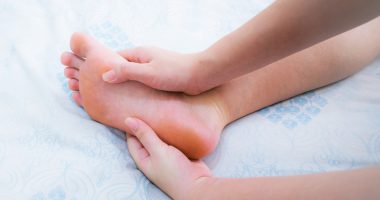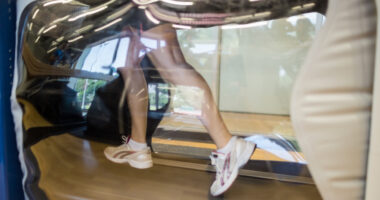Foot Deformity Doesn’t Affect Walking Impairments in CMT: Study

Africa Studio/Shutterstock
The ability to walk in children and adolescents with Charcot-Marie-Tooth (CMT) disease is similarly impaired regardless of their type of foot deformity, according to a small study.
The study, “Do different foot types affect the 6-min walk test capacity of younths with Charcot-Marie-Tooth neuropathy,” was published in BMC Pediatrics.
CMT comprises a group of inherited neuromuscular disorders characterized by impairments in the peripheral nervous system, the network of nerves that control movement and sensation (touch, heat, cold) to the arms and legs.
As a result of muscle weakness, foot deformities and walking difficulties are common among people with CMT. High foot arch, or pes cavus, affects more than 70% of patients.
Researchers at the Ribeirão Preto Medical School, São Paulo, Brazil, used the six-minute walking test (6MWT) in a group of children and adolescents with and without CMT to determine whether different types of foot postures or deformities have a different affect on patients’ walking abilities.
The 6MWT measures the maximum distance a person can walk in six minutes on a flat surface. The person can walk at their own pace and can stop and rest as many times as they need.
In this case, the team measured the total distance (D6), as well as the percentage of predicted distance (D6%) and walking velocity during the 6MWT.
In total, the CMT group was composed of 31 participants (mean age 12 years; 18 boys) and the non-CMT of 32 (similar age; 17 boys). CMT1A was the most common disease subtype, seen in 22 patients (71%).
The researchers considered three types of foot — normal, supinated and pronated. A supinated foot is when weight is placed on the outside of the foot while walking or running. A pronated foot happens when the foot rolls inward with each step.
The foot type was evaluated by the Foot Posture Index (FPI), with total scores ranging from -12 to +12. A score between 0 and 5 is considered a normal foot. A pronated foot is between 6 to 9 and very pronated from 10 to 12, while a supinated foot is from -1 to -4 and a very supinated foot is from -5 to -12.
There was a predominance of supinated feet in the CMT group (17 patients; 54.8%), followed by normal feet (11 patients; 35.5%). Three patients (9.7%) had pronated feet. In the non-CMT group, only two participants had pronated feet and two had supinated feet, with the majority (28 participants; 87.5%) showing normal feet.
An analysis of the percentage of predicted distance showed no differences comparing the foot type groups in both the CMT and non-CMT groups.
However, CMT patients showed significant impairments across all parameters — D6, D6%, and walking speed — compared with non-CMT participants, confirming their walking impairments. This was seen regardless of the foot type.
For example, CMT patients walked a mean total distance of 469.2 meters (m) compared to 566.3 m for the non-CMT group. The mean D6% was 70.64% in the CMT group vs. 85.2% in those without CMT. Walking speed was significantly slower in the CMT group, mean 1.3 meters per second (m/s) vs. 1.56 m/s.
A total of 12 CMT patients were evaluated again after a mean follow-up of 12 months. The impairments were still present as no significant differences were seen between both time points.
These results suggest that “contrary to what was expected, the cavus foot type did not show lower gait [walking] capacity than the flatfoot, suggesting that the types of feet alone did not determine differences in gait capacity within the CMT group,” the researchers wrote.







